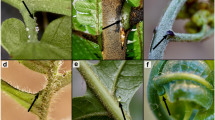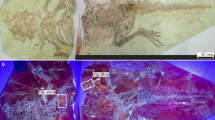Abstract
THERE is no doubt that the physiological significance of insect coloration has not yet been fully realized by ecologists, while its direct survival value has often been overstressed. From this point of view Dr. Kalmus's article in NATURE1 is to be welcomed. His treatment of the problem, however, is such that it may bring undeserved discredit to essentially sound ideas. Starting with references to some recent investigations on the physical properties of insect cuticle, Dr. Kalmus proceeds to formulate thirteen “Rules”, based on the still scanty results of those investigations, on a number of assumptions (for example, “a dark cuticle is mechanically the stronger”, which he admits to be an assumption not yet proved, but on which no less than four “Rules” are based), and on teleological speculation. The evidence quoted in support of each “Rule” is exceedingly meagre and often inaccurate, as a few examples will show. The mole cricket quoted in Rule 3 is not “entirely dark” but paler than most of its relatives. Rule 4 (“giant forms are usually black ; bright colours are more frequent among small insects”) is not supported by any evidence, and its correctness is highly doubtful. Mayflies, on the sole support of which Rule 9 rests, are not necessarily pale and some are even black. Eggs of Phasmodea (Rule 10) are not “dark and hard”, but always hard and only sometimes dark. Rule 11, stating that “most non-black insects are found in the tropics” has since been presented2 in a more intelligible way by saying that “the proportion of non-black insects is greater in the tropics”, but it is legitimate to ask on what evidence this statement, implying the existence of some numerical data, is based. Similar statements of alleged quantitative character constitute many of the “Rules”, and it is surprising that they should emanate from a University Department of Biometry where more respect for statistical data would be expected.
This is a preview of subscription content, access via your institution
Access options
Subscribe to this journal
Receive 51 print issues and online access
$199.00 per year
only $3.90 per issue
Buy this article
- Purchase on Springer Link
- Instant access to full article PDF
Prices may be subject to local taxes which are calculated during checkout
Similar content being viewed by others
References
NATURE, 148, 428 (1941).
NATURE, 148, 694 (1941).
NATURE, 148, 693 (1941).
Author information
Authors and Affiliations
Rights and permissions
About this article
Cite this article
UVAROV, B. Properties of Cuticle and Insect Ecology. Nature 149, 109–110 (1942). https://doi.org/10.1038/149109b0
Issue Date:
DOI: https://doi.org/10.1038/149109b0
Comments
By submitting a comment you agree to abide by our Terms and Community Guidelines. If you find something abusive or that does not comply with our terms or guidelines please flag it as inappropriate.



